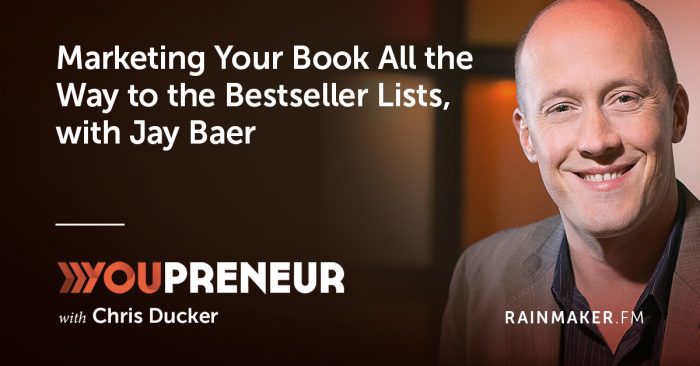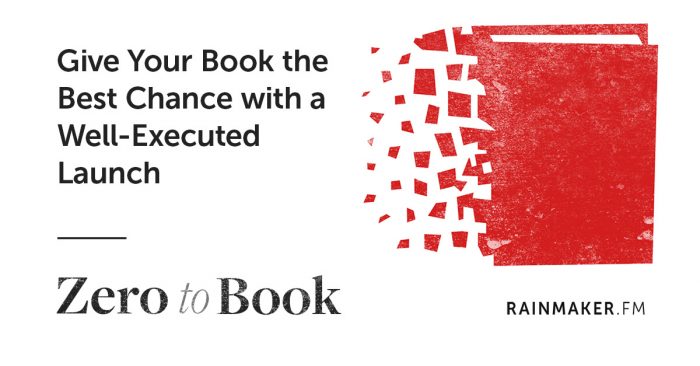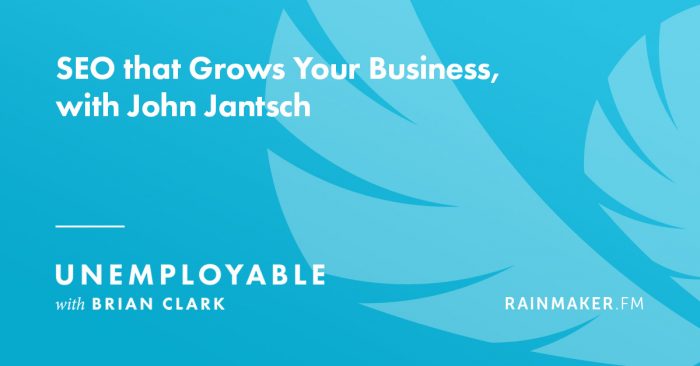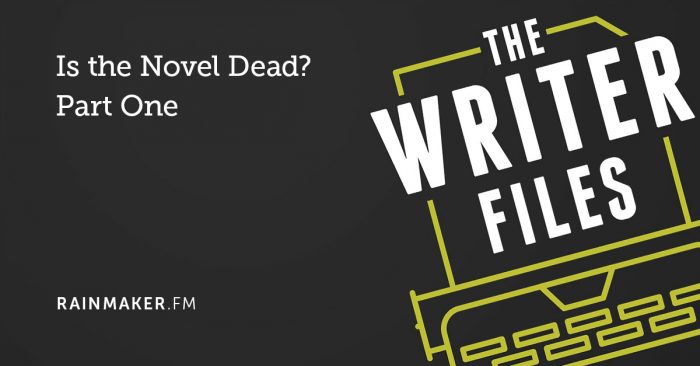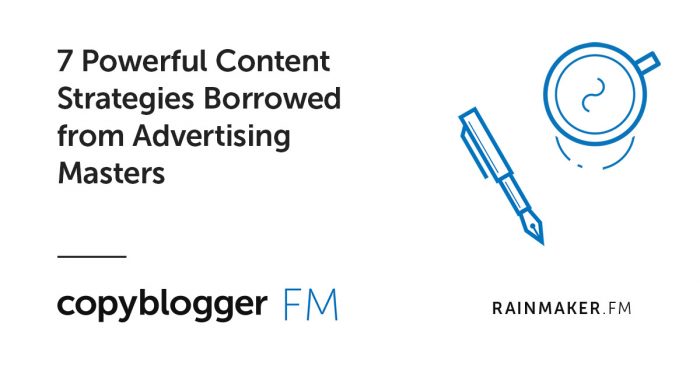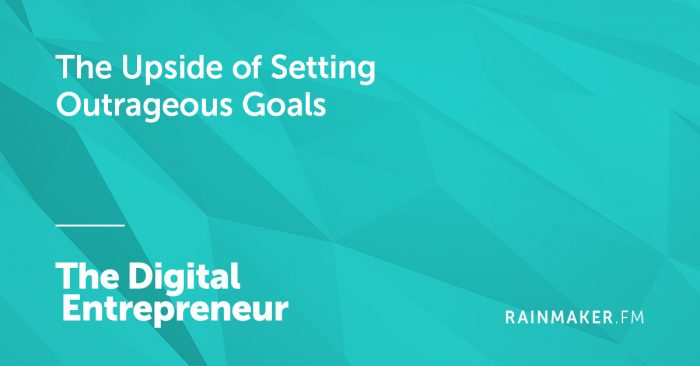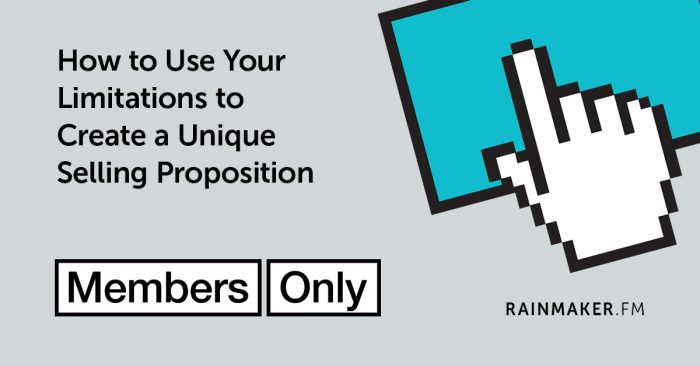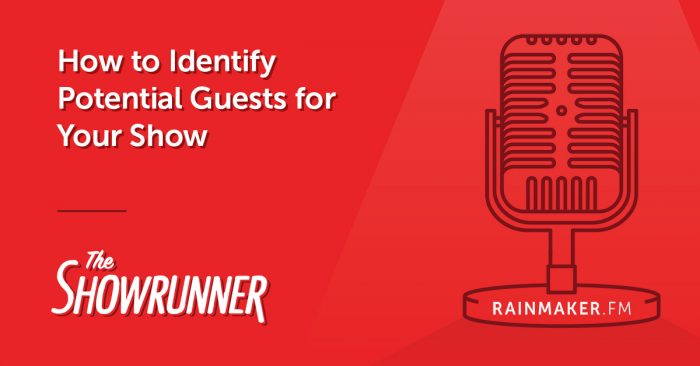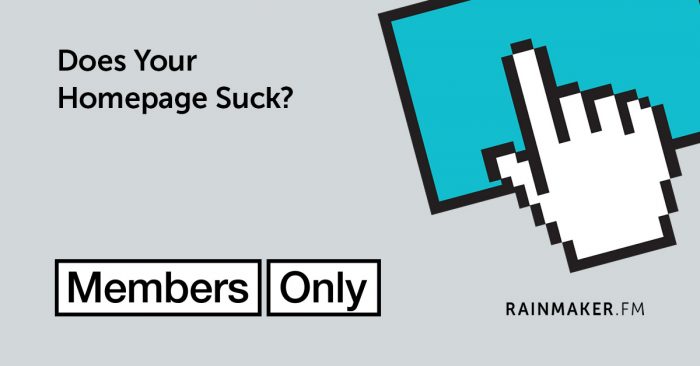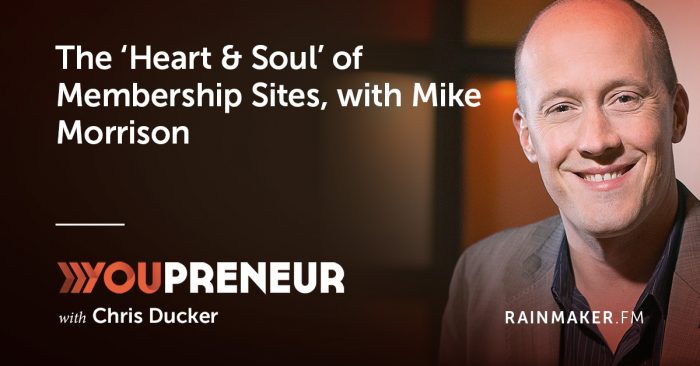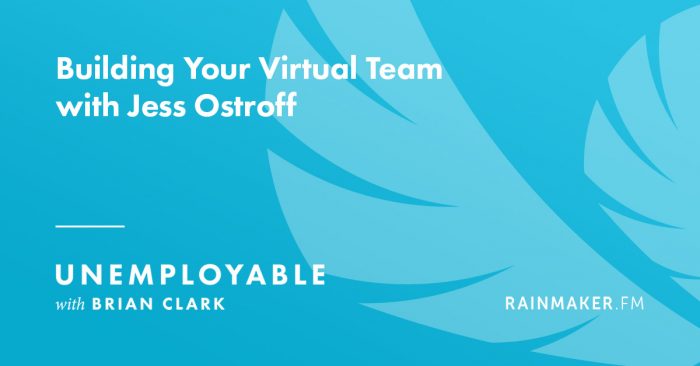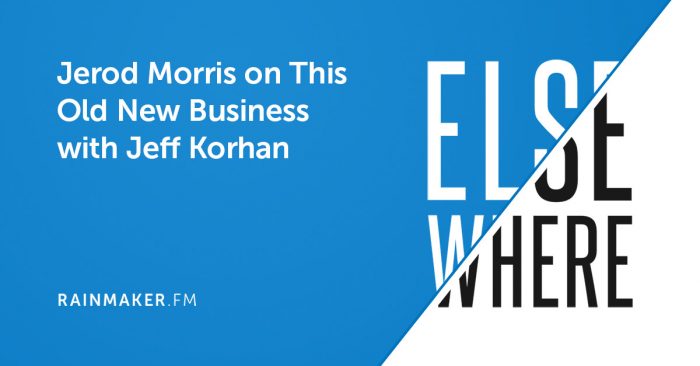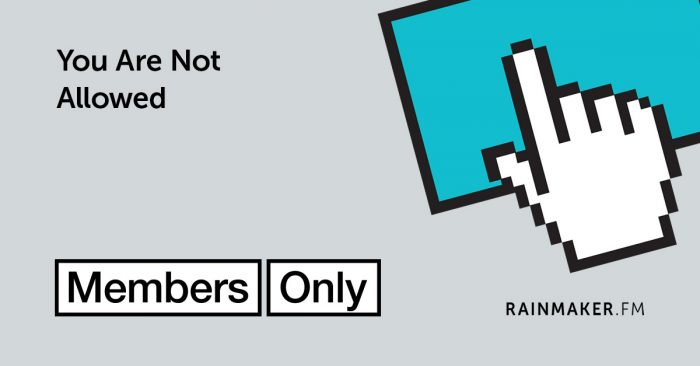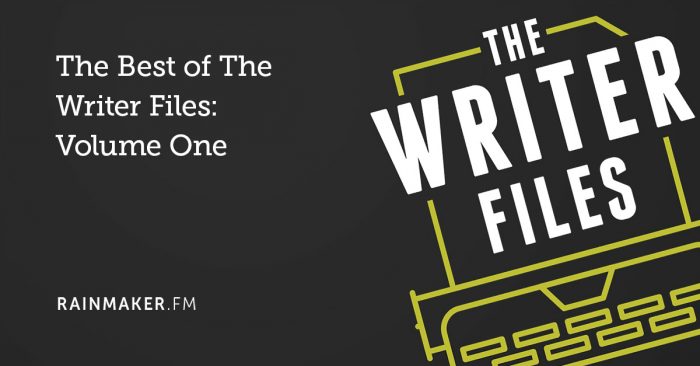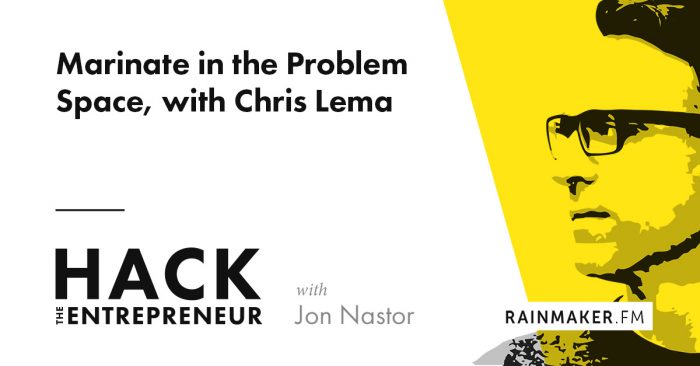Thursday, 29 September 2016
Here’s How to Find the Right Mix and Fine-Tune Your Offer

Have you ever wondered if your strange collection of skills and interests could be woven together to build a profitable business?
If you have, you’ll love today’s Hero’s Journey article.
Lauren Pawell is a rare breed: she has a background in development and marketing. That’s a combination you don’t see every day!
Some people might have encouraged Lauren to choose one field or the other. But she persisted and has built a business that artfully combines her many passions.
Lauren’s story is this month’s Hero’s Journey feature. We’re tapping the collective wisdom of our community members to bring you reports from the front lines of the content marketing world. See all the Hero’s Journey posts here.
Read on as Lauren shares what she’s learned over the years and how you can use her hard-earned wisdom in your own business.
Building a one-stop revenue-building shop
Lauren Pawell: What sets Bixa Media apart is my background in both development and marketing. This allows me to sit at the intersection of business, technology and design.
We help entrepreneurs turn their WordPress and Shopify websites into revenue-generating powerhouses. We do that through a mixture of website design and development, content marketing, search engine optimization, paid advertising, and online reputation management.
Not only can we write killer copy, but we can also evaluate your technology options, decide which is best for your needs, and build everything for you, while keeping your business objectives at the forefront of the process.
I find our clients really value having a partner who can help them from A to Z.
Perhaps more importantly, we’re able to tell our clients where not to waste their dollars and effort, and where to focus their resources.
Even if this doesn’t always match what a client had in mind, our honest feedback resonates with business owners.
We offer two types of services:
- 1:1 online marketing services: For medium-sized businesses who are looking to outsource their online marketing, we offer a variety of services designed to amplify their online exposure and generate more customers.
- DIY programs: For small businesses or solopreneurs who don’t yet have the resources to outsource their marketing, we offer educational marketing programs through Websites That Generate.
My business is primarily online, although I do plenty of networking offline — I find they go hand-in-hand. The offline contact tends to tip the scale in our favor, especially when it comes to securing large contracts.
Putting the brakes on spinning wheels
Lauren Pawell: I started my business for two reasons.
First and foremost, after working in marketing overseas for a few years, I saw so many small-to-medium-sized businesses with a wealth of online opportunity at their fingertips. But they just didn’t have the right guidance.
As a result, they were spinning their wheels in so many different directions with little-to-no impact.
I wanted to help them pick that low-hanging digital fruit, so that they could continue to grow their businesses and entrepreneurial dreams.
So, in 2011, I moved back to the United States, booked my first client at a friend’s birthday party (notice that offline touchpoint!), and haven’t looked back since.
The best part of that story? Our first client still works with us today and has gone from a one-man business to a 20+ person company. Now that is why I started Bixa!
I don’t share the second reason with many people, but I feel it will resonate with the Copyblogger audience.
In 2011, I had been through one-too-many bad bosses and was tired of not being in charge of my own destiny, from both a personal and career standpoint. That freedom I craved drove me to start my own company.
My driving motivation is to help other entrepreneurial spirits achieve the same freedom I have.
Conversion experiments that paid off
Lauren Pawell: Converting cold traffic into qualified leads is a finicky beast, especially when it comes to selling online education.
It’s not hard to understand why — cold traffic doesn’t immediately pull out their wallets. It took quite a bit of trial and error to dial in our lead-nurturing process, but we did it.
A few highlights:
We use Facebook ads as our hook
A new email subscriber generated from a Facebook ad was not likely to immediately jump up and buy our program. However, when we started to establish trust and demonstrate our authority through a few different mediums, we were far more successful.
Here’s what we do:
First, we run the new subscriber through a long welcome series over email. We send them 7 emails over 20 days, all of which include a lot of copy. It helps us weed out unqualified leads.
While in many approaches we did not want a lot of unsubscribes, in this case, we welcome them. It allows us to filter out anyone who doesn’t immediately love us.
After this, we direct the subscriber to our private Facebook community
There we share weekly educational content over video and give 1:1 feedback, similar to what they would experience in our course. This also helps establish us as a trusted and authoritative figure.
Then, we deliver free educational webinars on specific topics
This helps the subscriber better understand their problem and the solution they need to transform their situation.
Finally, we open our doors periodically
Last, but not least, we sell our program through email during specific times of the year, and are available on live chat to answer any questions the prospects have. (This, again, is similar to our course experience).
Some may say we give away too much for free, but I find this really helps us find great students. Plus, it allows our Facebook ad spend to generate far more ROI.
When we didn’t follow this solution and jumped straight from Facebook ads to a webinar to a sales email, our conversion rates weren’t great. Now, they are stellar.
So, if you feel like you are wasting dollars on Facebook ad spend, consider the rest of your funnel. Now that we know what works, it’s far easier to justify scaling up our marketing spend.
Venturing into online education (one validated step at a time)
Lauren Pawell: In Q2 of this year, I decided to test the idea of online education programs.
I wanted to be less reliant on 1:1 client work, which can be unpredictable. And I wanted to help all the entrepreneurs we were turning away due to a full calendar on our end, and limited resources on their end.
To validate the idea, we began being incredibly transparent about our marketing tactics.
We educated our audience through a number of mediums, notably: email, online webinars, and a private Facebook community.
I believed that through great educational content, we could:
- Empower solopreneurs, allowing them to achieve quick wins in their businesses
- Determine whether there was a demand for our DIY programs
This effort has been quite successful. We recently presold an educational course (before it was created) that our audience was begging for.
By validating an idea through free content first, we were then able to dedicate the resources to creating paid educational programs. A course takes a lot of front-loaded work, especially content creation. The last thing I wanted to do was create a program no one wanted.
As an added benefit of this education-first approach, when 1:1 prospects come through the door, they are already sold on working with us. Because they already understand the “why” behind our recommendations, the selling is 90 percent done by the time we write a proposal.
The Rainmaker Digital products Lauren uses
Lauren Pawell: We use quite a few Rainmaker Digital products, including:
- Rainmaker Platform to power our online courses and membership programs at Websites That Generate
- Genesis Framework + StudioPress themes to power clients’ websites
- Copyblogger Authority and Digital Commerce Institute to continue learning and engaging with the community
I also happen to be a new Copyblogger Certified Content Marketer. And I’m attending the upcoming Digital Commerce Summit in Denver.
So, needless to say, I’m a Rainmaker Digital diehard!
Refining and scaling up for the future
Lauren Pawell: In the final quarter of 2016, we’ll focus on refining our sales funnels and scaling up our DIY programs.
Our educational courses at Websites That Generate haven’t been marketed on our website, or really even promoted outside of email. That’s because I wanted to run a few groups of people through our programs to ensure we really dialed them in.
Now that we’ve gotten the process down, we’re ready to scale up. The first step in that process requires some adjustments to our sales funnel. Then, we can scale up our lead generation through Facebook ads.
An unsolicited piece of advice
Lauren Pawell: If, like me, you’re considering creating an educational program to complement your 1:1 services, I highly recommend the Rainmaker Platform.
All of the technology was so easy to set up, allowing us to focus most of our effort on the course creation and marketing.
When it comes to selling a course and serving your students, the less you have to worry about the technology, the better.
Find Lauren Pawell online …
Thanks to Lauren for appearing in our Hero’s Journey series.
Do you have questions for her? Ask them in the comments.
We’ll be back next month with another story to teach, inspire, and encourage you along your journey.
The post Here’s How to Find the Right Mix and Fine-Tune Your Offer appeared first on Copyblogger.
from
http://feeds.copyblogger.com/~/204693484/0/copyblogger~Heres-How-to-Find-the-Right-Mix-and-FineTune-Your-Offer/
Wednesday, 28 September 2016
Marketing Your Book All the Way to the Bestseller Lists, with Jay Baer
In this podcast episode, Chris Ducker sits down with Jay Baer to learn exactly how to become a New York Times bestselling author! Get your notebooks ready!
Book marketing is a topic that has come up a lot for me lately. As many of you know, I’ve just wrapped a book that has been traditionally published a while back.
Earlier this year, I interviewed Farnoosh Brock about her book on juicing, and her grassroots approach to marketing it — which worked very well for her. This time you will hear a different approach — a mix of old and new techniques, with some long-term brand building as the backbone.
In this interview, I talk with Jay Baer about his well-planned book marketing campaign, and we delve deep into how to become a New York Times bestselling author.
This is some very useful stuff, so get your notepads ready!
In this 50-minute episode, Jay and I discuss:
- Why using unorthodox book marketing techniques can work in your favor
- How you can build awareness long before your book is released
- The criteria for hitting the NYT bestseller list
- How to utilize your community to make your book go viral
- Why hiring a publicist is still a good idea in the new business economy
- How to use re-targeting to your advantage
The post Marketing Your Book All the Way to the Bestseller Lists, with Jay Baer appeared first on Copyblogger.
from
http://feeds.copyblogger.com/~/204339798/0/copyblogger~Marketing-Your-Book-All-the-Way-to-the-Bestseller-Lists-with-Jay-Baer/
Give Your Book the Best Chance with a Well-Executed Launch
The timing of your book’s launch is important. But how important is it? Here’s what really matters when you’re ready to launch your book.
In the words of Jeff Goins, “It’s really hard to launch too late and it’s really easy to launch too early.”
A good launch can make a book, while a bad launch can damage your credibility as an author, as well as have a negative effect on sales.
Pamela Wilson and Jeff Goins discuss best practices for a successful launch — and Jeff shares insight and experiences he learned the hard way from his past book launches.
In this episode Jeff Goins and Pamela Wilson discuss:
- The ideal day of the week to launch your book
- How the way you’re publishing should influence your launch date
- Best launch practices for the self-published author
- Pamela’s super-cool bonus for people who purchase her book
The post Give Your Book the Best Chance with a Well-Executed Launch appeared first on Copyblogger.
from
http://feeds.copyblogger.com/~/204315336/0/copyblogger~Give-Your-Book-the-Best-Chance-with-a-WellExecuted-Launch/
SEO that Grows Your Business with John Jantsch
Of all the components of a holistic online marketing strategy, search engine optimization (“SEO”) seems to mystify many the most. And it’s true that years back, the key to ranking well in Google was a form of dark art.
That’s changed in recent years. Google’s algorithm has gotten smarter, and is more distinctly tuned in to what the audience thinks is relevant and valuable for a given search term, rather than what we as marketers would prefer to rank well.
As my friend Rae Hoffman says, “Google doesn’t want to make websites popular, they want to rank popular websites.” In other words, get traffic rich by creating content that people want and value first, and Google will make you even richer.
Another friend of mine, John Jantsch of Duct Tape Marketing, has just co-authored a book called SEO for Growth, and it’s a completely up-to-date examination of what it takes to do well in search engines. I was honored that John asked me to contribute the foreword, and long-time readers of Copyblogger will see the natural evolution of tactics and strategies we’ve talked about for a decade.
Tune in for valuable tips on the modern practice of SEO. More importantly, discover how to execute on an SEO strategy that grows your business, not just your search traffic.
The post SEO that Grows Your Business with John Jantsch appeared first on Copyblogger.
from
http://feeds.copyblogger.com/~/204295772/0/copyblogger~SEO-that-Grows-Your-Business-with-John-Jantsch/
Ask Yourself These 3 Simple Questions to Craft Better Headlines

Last week, when I wrote about how to become a writer, I forgot to mention something about why you’d want to be a writer.
Writers are communicators. If you’re proud of your ideas, you want to be able to communicate them clearly and precisely.
Headlines are your first opportunity to present your message to the audience you want to reach. The language you use should appeal to those people and make them want to find out more.
To review the next headline you write from the perspective of an editor who is focused on audience engagement, here are three simple questions you can ask yourself.
A guide to finding the right words
Once you’ve written a draft of your headline and article (or you’ve recorded a podcast episode or video), use the questions below to ensure your headline is the most effective it can be:
- Who will benefit from this content?
- How do I help them?
- What makes this content special?
The answers to these questions most likely won’t produce the exact headline you’ll use. Rather, they’ll help mold your headline draft into a persuasive message that reaches and connects with the people you want to attract to your content.
To keep the process of infusing your headline with meaning and fascination simple, I recommend answering each question in one to two sentences.
If you need to write more, recognize your opportunity to fine-tune your goal for the content before revisiting these headline questions.
Let’s look at the important information each question will help you cultivate and how the answers will transform your headline.
1. Who will benefit from this content?
“The point is to bond strongly with someone rather than boring everyone.”
When you define your audience, you can review your headline to make sure you use language that intrigues those individuals.
For example, your target audience may be marine biologists who have a tendency to procrastinate.
If your headline only says, “10 Tips to Beat Procrastination,” you can look for ways to add words that will attract marine biologists. And you don’t have to explicitly announce, “Hey marine biologists who have a tendency to procrastinate, this content is for you!”
You could try:
10 Tips to Beat Procrastination Faster than a Black Marlin
(A black marlin is one of the fastest fish.)
2. How do I help them?
People don’t necessarily wake up in the morning excited to read content.
The promises that certain pieces of content make to expand people’s understanding or knowledge of a topic persuade them to read content throughout the day. The content may even change their lives.
Your tips might help marine biologists accomplish tasks faster, and if they can accomplish tasks faster, they’re less likely to put them off.
Here, you can add another benefit to the headline:
10 Time-saving Tips to Beat Procrastination Faster than a Black Marlin
3. What makes this content special?
You may now realize that while a lot of other articles focus on “beating procrastination,” your content is special because it shows how to simplify and organize your daily marine biology to-do list so that each task is manageable.
Now you’ll want to revise a few words from your original headline:
10 Time-saving Tips to Zip Through Your Work Day Faster than a Black Marlin
Custom-tailored headlines for your content
We started this exercise with the headline:
10 Tips to Beat Procrastination
The final result is:
10 Time-saving Tips to Zip Through Your Work Day Faster than a Black Marlin
If you’re a marine biologist with a tendency to procrastinate, which headline would you click on?
The post Ask Yourself These 3 Simple Questions to Craft Better Headlines appeared first on Copyblogger.
from
http://feeds.copyblogger.com/~/204209104/0/copyblogger~Ask-Yourself-These-Simple-Questions-to-Craft-Better-Headlines/
Tuesday, 27 September 2016
Is the Novel Dead? Part One
In this special edition of the show, two writers joined me to opine the death of one of the most influential forms in the history of the written word. I posed the question that many great writers have pondered stretching across the last two centuries …
Is the novel dead? And maybe a more up-to-date version of that question is, did the internet kill books?
Of course these are famous — almost cliché — theoretical discussions that writers often chew on over stiff drinks, and they raise hackles for those of us who adore them.
What you won’t find here is a highbrow literary dissertation, or even a very strict definition as to what the novel is or isn’t. But you will find a lively discussion between friends who care about the writing life and its future.
Robert Bruce is a writer, voice actor, and copywriter, as well as the Vice President of Rainmaker Digital and the guy who runs the Rainmaker FM podcast network.
Adam Skolnick is an award-winning journalist, author, and a returning guest on the show. His first book, One Breath, was published by Crown last January, and his work has appeared in publications including Playboy, The New York Times, and many others.
If you’re a fan of The Writer Files, please click subscribe to automatically see new interviews as soon as they’re published.
In Part One of the file Robert, Adam, and I discuss:
- How longer works of writing have been forced to compete with disposable culture
- Why Herman Melville died penniless
- How the novel has stood the test of time
- The role of podcasting for modern writers
- Author Hugh Howey’s “Rock, Paper, Scissors” model of book retail
The post Is the Novel Dead? Part One appeared first on Copyblogger.
from
http://feeds.copyblogger.com/~/203790996/0/copyblogger~Is-the-Novel-Dead-Part-One/
7 Powerful Content Strategies Borrowed from Advertising Masters
The Copyblogger blog was founded on a simple but powerful idea — that our content (blogs, podcasts, videos) can be strengthened by adapting techniques from the world of direct response copywriting.
Today, Sonia drills into some specific techniques and approaches that we can profitably swipe from our direct response brothers and sisters.
In this 24-minute episode, Sonia Simone talks about:
- The crucial difference between subscribers and an audience
- How to develop a “big idea” that tells the world who you are
- The boring-sounding secret of the really great copywriters (this is especially powerful today)
- The fascinating world of recommendation algorithms
- Working toward business goals without sounding like an infomercial
- 9 quick ideas to make your content more interesting
The post 7 Powerful Content Strategies Borrowed from Advertising Masters appeared first on Copyblogger.
from
http://feeds.copyblogger.com/~/203770040/0/copyblogger~Powerful-Content-Strategies-Borrowed-from-Advertising-Masters/
2 Essential Elements of Irresistible Content

I once asked on social media:
What’s your biggest challenge when creating compelling content?
I didn’t treat it as a poll with various challenges. I wanted pure, unfiltered responses.
And the number one answer was:
Keeping it original and interesting.
So, let’s talk about that today.
Meaning + fascination
The two elements that lead to reader engagement, social media sharing, and the “gotta have it now” impulse are meaning and fascination. But you knew that from the subhead.
Let’s unpack each a bit.
Meaning: This is the informational aspect of your content that your regular readers, listeners, or viewers expect from you. This is also a topic that matters to the prospective audience you’re trying to reach through social media sharing.
Another way to think of this important aspect of your content is relevance. Content must be highly relevant to your existing and prospective audience, but I prefer meaning, as it implies an extra level of value that makes people treasure you.
Fascination: The fascinating element of your content is where your creativity shines. It’s the fun, shocking, or entertaining aspect of your content that makes people pay attention and share with their friends and colleagues.
Often you’re using an analogy, metaphor, or simile to make an associated connection between something cool and an important topic that might otherwise be pretty boring.
Not only does this attract and hold attention, it also aids in comprehension and retention for your audience, which in turn increases your subject-matter authority with them (because they actually learn something).
Here are two examples from Copyblogger (meaning in italics, fascination in bold):
How I Became a Better Writer Thanks to Distracted, Hungover College Kids
This article took a highly improbable source of fascination to deliver the meaning readers of Copyblogger seek — how to write better.
5 Things a Bad Dog Can Teach You About Writing Good Copy
It’s pretty easy to spot the meaningful and fascinating elements in that one, right?
(Don’t fear) fascination
Many people, especially in professional services or conservative industries, are afraid to go out on a limb and throw in that fascinating aspect. I’d argue that these are the types who have the most to gain from breaking out of stodgy convention and shaking that moneymaker a bit.
You can get a lot of mileage out of industry inside jokes and references that are completely obscure to outsiders. Remember, you don’t care what anyone else thinks other than your target audience.
And from post to post, you may only bond strongly with a small segment of the people you talk to. One article speaks strongly to some, the next to others.
The point is to bond strongly with someone rather than boring everyone.
Bonus points if you got that the subhead for this section is a terribly clever Blue Öyster Cult and Human League reference: (Don’t Fear) the Reaper + (Keep Feeling) Fascination.
Also, if you have to explain your terribly clever reference, it’s too obscure. Clarity matters more, no matter how cool the author thinks it is. 
Ultra-meaning can be fascinating
It’s true that you can intrigue people with an overwhelming amount of relevant meaning, to the point that it becomes fascinating in and of itself. This is the realm of list and how-to articles that go viral on sheer value alone.
The key to this type of engaging content is specificity. The more specific the value you promise and provide, the more fascinating people deem it.
Check out these examples:
- 109 Ways to Make Your Business Irresistible to the Media
- 5 Remarkable Qualities of Effective Online Content
- The 4 Words That Will Get Your Email Opened
Hopefully you feel the same way about this article.
Yep, this is also how you write great headlines
In each example I’ve given, you can spot the intersection of meaning and fascination from the headline alone.
That’s why meaning + fascination = the secret to engaging content and great headlines.
Remember, the title of your article is simply a compelling promise of what your content offers. When I say write your headline first, I mean come up with an intersection of meaning and fascination, reduce it to a working title, then deliver on the promise by crafting the content.
If you find you can’t deliver on the promise, you’ve got to scrap that idea and find another.
Don’t strain to make a bad analogy work; simply look for another pairing of meaning and fascination — they’re everywhere once you understand what you’re looking for.
Editor’s note: The original version of this post was published on April 7, 2011.
The post 2 Essential Elements of Irresistible Content appeared first on Copyblogger.
from
http://feeds.copyblogger.com/~/203675688/0/copyblogger~Essential-Elements-of-Irresistible-Content/
Monday, 26 September 2016
The Upside of Setting Outrageous Goals
This week’s guest on The Digital Entrepreneur is determined. His goal is to help five billion people with their efforts to grow their businesses. How?
He’s doing so by sharing as much content as he possibly can and by providing valuable services to purpose-driven companies.
He strives to be wealthy, not just in material things, but also with connections to make the world a better place …
In this 46-minute episode, Brandon Lewin and I discuss:
- The biggest benefit he derives from being a digital entrepreneur
- Why he finds it imperative to “give away” all the information he possibly can
- His story on how he got the taste for entrepreneurship at a young age
- What led him to the realization that he never wanted to work for anybody else
- The milestone that he’s most proud of as a digital entrepreneur
- How he consciously chooses the right people to work with to create his “A-Team”
- How marketing automation has benefited his business
And much more.
Plus, Brandon answers my patented rapid-fire questions at the end of the episode, which unveiled a couple common interests that we share. Don’t miss it.
The post The Upside of Setting Outrageous Goals appeared first on Copyblogger.
from
http://feeds.copyblogger.com/~/203226128/0/copyblogger~The-Upside-of-Setting-Outrageous-Goals/
How to Ruthlessly Cut Worthless Words from Your Sales Copy

When you’re writing sales copy for your business, showing a little personality is a good thing.
It’s also a good idea to use natural language whenever possible, so people know you’re a real person who is genuinely interested in helping your prospects and customers.
I write conversationally when I write copy, and so do a lot of other folks I trust and admire.
However, there are limits to how far you should take that advice.
Are you taking a risk when you use slang?
Unless you have proof that your audience uses slang — and wants to see it in sales copy — you should avoid using it in your persuasive emails, sales pages, and other types of “selling” collateral.
And when I say “slang,” I’m also including alternative spellings, slang abbreviations, and hyperbole.
I know there’s a high probability I sound like an old grandmother shouting at kids to stay off her lawn — but lately I’m seeing this trend more and more frequently in sales copywriting. And I suspect it’s radically decreasing conversions.
Types of slang to avoid in copy
Want to see some examples? These are all words and phrases I’ve recently noticed on sales pages and in emails that were designed to sell me something:
- BOOM!
- Pleez (or worse yet, pleeeeeeeeez)
- OMG
- FREAKING ROCKED
- LOL
Chances are, you’ve got your own list of words that annoy you when you see them in professional writing. My list could go on for a while, but I’ve chosen some of my biggest pet peeves. I wince every time I see those words in an email from a business.
Why you want to avoid them
There’s a compelling reason to avoid slang and abbreviations like the ones on the list above: they often don’t add value to your copy — and can actually distract your prospects.
When your prospective buyers read your sales page and decide whether or not your product is a good fit for them, you don’t want to distract them for a single moment. You want every line of your copy to flow seamlessly into the next, without interruption.
If you sprinkle your sales page with slang and nonsense words, there’s a good chance you’re going to interrupt that flow.
Keep prospects focused on the action you want them to take
You might innocently include “OMG” in your copy in attempt to sound conversational, but prospects could be distracted by that choice and think, “Wait, why does he say ‘OMG’ in the middle of this paragraph?”
If you’re trying to reach people who aren’t native English speakers (or who come from older generations), they might also ask, “What does ‘OMG’ mean?”
At best, the “OMG” is only a temporary distraction that slows down prospects’ decision-making processes as they read. At worst, the slang and misspelled words will turn off readers so much that they abandon your sales page forever — and you’ve just lost them as customers.
Slang words and abbreviations that belong in text messages also don’t add any value to your copy. As sales copywriters, we must choose every word carefully. Every word and phrase on the page needs to pull its weight — slang and overused exclamations like “OMG” just don’t cut it.
Think I’m wrong?
Perhaps in certain circumstances you’re correct — there are exceptions to this rule, of course.
If you performed extensive research and know for certain your prospects use this type of language — and want to see it in sales copy that promotes your product or service — you might be able to get away with using it.
You should test out these words and phrases to see if including them increases your conversion rate.
If they don’t, I recommend cutting them. Even if your prospect tolerates these words and phrases, they’re probably not contributing anything to your copy.
Get more copywriting tips
If you’re looking for more tips on how to make your copy tighter, more readable, and more persuasive, check out Copyblogger’s free ebook Copywriting 101: How to Craft Compelling Copy.
The 90-page ebook is packed full of helpful advice, including more thoughts on audience research and using your prospect’s preferred language.
Do certain words irritate you when you see them in professional copywriting? Or are there any you’re guilty of using (or overusing) yourself? Tell us about it in the comments below.
The post How to Ruthlessly Cut Worthless Words from Your Sales Copy appeared first on Copyblogger.
from
http://feeds.copyblogger.com/~/203132642/0/copyblogger~How-to-Ruthlessly-Cut-Worthless-Words-from-Your-Sales-Copy/
Thursday, 22 September 2016
How to Use Your Limitations to Create a Unique Selling Proposition
We often think of limitations as weaknesses. In reality, they are strengths that will help differentiate your products/services in the market.
How do you target the right customers? Who are they and how do you attract them? Every marketer struggles with these questions. But the key to targeting the right customers is in understanding the limits of you and your products/services.
Every product or services has its limits. And while most people think these are weaknesses, the truth is that your limitations are a source of strength — if you know how to position them.
And by following the advice in this episode, you can easily assess those limitations and use them as part of what makes your product or service unique.
More importantly, you can use that unique quality to define who you should target.
In this episode, Sean Jackson and Jessica Frick go into detail about the “formula” for finding your target audience:
- Why resource constraints are great to have
- Why defining the ideal customer for your product is more about you than them
- How your limits are actually strengths that will draw customers to you
- And why being one-in-a-million is a huge marketplace
The post How to Use Your Limitations to Create a Unique Selling Proposition appeared first on Copyblogger.
from
http://feeds.copyblogger.com/~/201176284/0/copyblogger~How-to-Use-Your-Limitations-to-Create-a-Unique-Selling-Proposition/
How to Identify Potential Guests for Your Show
We’re back! And, we hope, better than ever. In our triumphant return to the mics for the beginning of Season 2 of The Showrunner, we tackle a listener topic idea that we’ve had percolating for a while and discuss the best methods for identifying potential guests for your show.
Here is the idea, submitted by loyal listener Chris Conner, who hosts Life Science Marketing Radio.
I know that it can be hard to find guests to sustain a podcast. Last week I came within an inch of having to do a solo show. Yikes!
But then I look around and realize I have other opportunities. The best source of guests for me have been 1) past guests, and 2) listeners who contact me. It works because my audience are the type of people I interview.
Maybe it’s worth a mention or a whole episode that interviewing the peers of your audience is a strategy to ensure a long-running show. Obviously HTE does this too so it’s not a new idea, but for folks starting out, it may be a consideration.
Chris’s suggestion — about interviewing the peers of your audience — is a smart strategy. It can lead to useful stories and lessons, because ostensibly your guests will naturally empathize and relate with your audience, and vice versa. Well said, Chris.
We take Chris’s suggestion to the next step and identify additional strategies for finding guests for shows, including:
- Jonny’s “Barnes and Noble strategy”
- How Caroline Early identifies guests for The Digital Entrepreneur and Unemployable
- How Will DeWitt booked his biggest interview yet by simply doing something nice
Plus, we discuss the importance of balancing aspirational guests with “move-the-chain” guests, and we provide some useful wisdom on how to approach the possibility of bringing on a co-host.
All of this, and more, on the latest edition of The Showrunner.
Listen, learn, enjoy …
The post How to Identify Potential Guests for Your Show appeared first on Copyblogger.
from
http://feeds.copyblogger.com/~/201150374/0/copyblogger~How-to-Identify-Potential-Guests-for-Your-Show/
How to Scale a Freelance Business
On this week’s episode, we’re joined by Bill Erickson. Bill is a WordPress Developer, an entrepreneur, a husband, a father, a skier, an avid reader, a gardener, and a winemaker living in Georgetown, TX. He’s been developing with WordPress and contributing to the community since 2006.
Bill has written 20 WordPress plugins that have been downloaded 668,661 times and has spoken at 13 conferences regarding WordPress. Last, but certainly not least, Bill is a core contributor to our very own Genesis Framework project.
In this 40-minute episode Brian Gardner, Lauren Mancke, and Bill Erickson discuss:
- Bill’s decision to become a freelancer
- Transitioning from Thesis to the Genesis Framework
- Building your brand and your business with shareable content
- Using your website to prequalify potential clients
- Scaling your business through efficiency
- The importance of contracts
- Building a work/life balance that works for you
The post How to Scale a Freelance Business appeared first on Copyblogger.
from
http://feeds.copyblogger.com/~/201130850/0/copyblogger~How-to-Scale-a-Freelance-Business/
Does Your Homepage Suck?
In this episode, we go beyond theoretical concepts and provide practical examples of how to improve the most important page on your website.
You never get a second chance to make a first impression.
And in the online world, that means your homepage matters, a lot — from the first few seconds of your site loading to the way you structure every element on the page.
If you are trying to create an exclusive community online for your product or service, then this episode will give you everything you need to make a first impression that matters.
In this episode, Sean Jackson and Jessica Frick go into detail about how to structure the perfect homepage including:
- Why the first three seconds matters and what you need to show immediately
- How to go beyond audience targeting with messaging that makes a difference
- Why testimonials are crucial and how to obtain them
- The most important element of the homepage that you must include
-
Listen to this Episode Now
The post Does Your Homepage Suck? appeared first on Copyblogger.
from
http://feeds.copyblogger.com/~/201111274/0/copyblogger~Does-Your-Homepage-Suck/
5 Ways Strategic Bullet Points Make You a Stronger Content Marketer

Bullet points make you a stronger content marketer?
Absolutely, if you’re good at writing them. In fact, being a master at writing exceptional bullet points is one of the most important copywriting skills around, second only to headline writing.
The goal of strategic bullet points is primarily to keep people reading. You’re highlighting easily digestible bits of important information, which keeps your reader’s attention focused and breaks up dense pools of text.
The downside is that if you write weak, boring bullet points, you give the reader an express invitation to leave. People scan content to decide if they want to keep reading, but also as a way to justify not reading.
So let’s write some better bullet points.
1. External fascinations
These types of fascinating bullet points are usually found in sales copy for information products and membership sites, and they function like headlines that prompt a purchase or other action.
Also known as “blind” bullets, they hint at the content of a product or service and create curiosity without revealing the actual substance.
You can also use these bullets to prompt an opt-in or subscription tied to a free report, audio, or video.
Here’s an oft-cited example from ace copywriter John Carlton:
“The amazing ‘Towel Hanging’ trick that increases the strength of your erection … plus your lovemaking stamina … allowing you to supercharge your love life in a very short time! (You have to experience these kinds of ‘rocket-burst’ orgasms to believe they’re possible! See page 139.)”
I don’t know about you, but that got my attention.
2. Internal fascinations
Internal fascinations are pretty much identical to external, except they’re designed to persuade people to continue reading the content they’re currently reading.
If you have a long article that you want to sell people on reading all the way through, you might lead with some teaser bullet points that captivate the imagination.
For example:
By reading this article you’ll learn:
- 3 counterintuitive activities that will improve your business
- How to turn your process into a product you can sell
- Why you’re not normal, and why that’s a good thing
3. Bullet chunking
Extracting bullets out of compound sentences helps you drive home a point while also increasing the usability of your content. Attention spans are short for sure, and reading dense paragraphs of text on a computer screen is still nowhere as easy as in print.
Don’t forget to begin each bullet point with the same part of speech and maintain the same grammatical form.
Here’s an example.
Fascinating bullet points are great for:
- Drawing people back into the copy they skimmed
- Prompting the download of a free offer
- Causing the click of a link
- Driving subscriptions to your website
- Triggering the purchase of your digital product
- Initiating a new client relationship
4. Authority bullets
Authority bullets are used to recite the data and proof that support your argument.
You want this information strongly presented in order to bolster the credibility of your content and your level of authority as a subject matter expert. As with all bullet points, try to turn dry, factual information into interesting reading if at all possible.
Here’s one approach.
Don’t believe me when I say reading is an uncommon activity? Check these facts:
- 58 percent of the U.S. adult population never reads another book after high school
- 42 percent of college graduates never read another book
- 80 percent of U.S. families did not buy or read a book last year
- 70 percent of U.S. adults have not been in a bookstore in the last five years
- 57 percent of new books are not read to completion
Most readers do not get past page 18 in a book they have purchased.
5. Cliffhanger bullets
Cliffhanger bullets tease and foreshadow what’s coming up next or in the near future.
You can close an installment in a content series with a cluster of teasers that have people looking forward to the next installment, which can also spur subscriptions. You can also use cliffhanger bullets to lay the groundwork for an upcoming promotion, launch, or special content event.
Check this one out …
Next week on Copyblogger:
- Discover how to ruthlessly cut words from your copy to make more sales
- Learn two essential elements of irresistible content that can dramatically transform your website
- Find out three simple questions you can ask yourself to craft better headlines
See you then?
Editor’s note: The original version of this post was published on July 14, 2008.
The post 5 Ways Strategic Bullet Points Make You a Stronger Content Marketer appeared first on Copyblogger.
from
http://feeds.copyblogger.com/~/201017438/0/copyblogger~Ways-Strategic-Bullet-Points-Make-You-a-Stronger-Content-Marketer/
Wednesday, 21 September 2016
The ‘Heart & Soul’ of Membership Sites, with Mike Morrison
Chris talks with Mike of the Membership Guys, and they discuss what it takes to come up with and maintain a membership site.
Membership sites have become something of an entrepreneurial pinnacle when it comes to online business. The idea of a regular and recurring income has sparked interest in so many business owners, but what does it really take to come up with and maintain a membership site?
On this episode, I deep-dive into the subject with Mike Morrison as we cover the good, the bad, and the ugly when it comes to the membership site model. We cover everything from how to validate your membership site idea to what it takes to keep it going. Great stuff!
Mike also shares his valuable insights into what makes up the heart and soul of membership sites, as well as how to handle launches and content the right way — without burning yourself out.
Get a pad and pen ready for this one and enjoy this episode of Youpreneur FM!
In this 59-minute episode, Mike and I discuss:
- Why I think that membership sites are a natural conclusion to regular, recurring income
- Mike talks about if membership sites are all about recurring income, or if there’s something more to it
- How membership sites help the members themselves
- Why you need to be seen to sell to help both your business and your membership community
- Where entrepreneurs should start before they start their own membership sites
The post The ‘Heart & Soul’ of Membership Sites, with Mike Morrison appeared first on Copyblogger.
from
http://feeds.copyblogger.com/~/200686628/0/copyblogger~The-Heart-Soul-of-Membership-Sites-with-Mike-Morrison/
Building Your Virtual Team with Jess Ostroff
As the leader of a virtual company of more than 65 people located around the world, I wouldn’t have it any other way. Of course, I had a lot of help from my partners getting to this point over the last six years.
Nowadays, you have publications like the Harvard Business Review talking about virtual teams and the “post-geographic” office as the next big challenge for enterprise management. Virtual reality technology holds the promise of eliminating the need for a centralized real estate presence.
For solopreneurs and growing small businesses, the acceptance of the concept doesn’t make finding and managing the right people any easier. Beyond locating the person with the right skill set, you’ve also got to find the right match for your particular personality and culture.
Jess Ostroff is a pioneer in the virtual assistant (VA) industry, so she’s got some valuable tips to share with you. She’s also pushing the boundaries of the virtual concept by creating an agency of talented writers, designers, developers, and assistants — essentially creating a virtual team of her own that you can tap into as needed.
The post Building Your Virtual Team with Jess Ostroff appeared first on Copyblogger.
from
http://feeds.copyblogger.com/~/200664058/0/copyblogger~Building-Your-Virtual-Team-with-Jess-Ostroff/
Jerod Morris on This Old New Business with Jeff Korhan
Jerod Morris chats with Jeff Korhan on This Old New Business about the importance of audience engagement and what an “audience of one” means for content marketers.
In this 37-minute episode, Jerod and Jeff discuss:
- Jerod’s top audience engagement tip
- Understanding your audience
- Why you should trust the fundamentals of audience engagement
The post Jerod Morris on This Old New Business with Jeff Korhan appeared first on Copyblogger.
from
http://feeds.copyblogger.com/~/200641014/0/copyblogger~Jerod-Morris-on-This-Old-New-Business-with-Jeff-Korhan/
You Are Not Allowed
In this new podcast on Rainmaker FM, you’ll learn how to use one of the most powerful — and counterintuitive — online marketing techniques to increase your online sales.
It is natural for online marketers to do whatever they can to increase the reach of their audience. It makes sense: the larger your audience, the more sales you make, right?
But what if there was a different way to increase your online sales, without trying to appeal to the masses? Sound impossible? Not really.
This new podcast goes in-depth on the insights, ideas, tactics, and strategies that will make a significant impact in your online marketing efforts by focusing on the few rather than the many.
This 7-minute episode provides a glimpse into the power and value of limiting access to your products and services and why you should be very selective in choosing who you sell to.
You’ll learn:
- Why we value some products and services more than others
- Why mass appeal can destroy the value of what you sell
- The traps to avoid when selling your product online
The post You Are Not Allowed appeared first on Copyblogger.
from
http://feeds.copyblogger.com/~/200613120/0/copyblogger~You-Are-Not-Allowed/
This Is How You Become a Writer

Stop. I see you, mid-eye-roll. I know you’re aware that you need to write regularly if you want to become a writer.
You might aim to write something every day, even if you don’t publish it anywhere. There’s no substitute for that type of practice. It’s that valuable.
But what do you write about if you don’t have any thoughts to express?
Some of you may now be talking out loud to your web browser to offer a rebuttal to that question, so I’m going to stop you again.
It was a trick question. If you’re a writer, there is always something to write about because of the way you view your experiences in the world.
Writers are fascinated with their experiences.
Today, I’m going to explore the outlook that helps you become a writer and how strong writing enables sharper content marketing.
Why you should write about everything that happens to you
A bee was trapped in my fireplace … Someone cut in line in front of me at the grocery store … I was stuck in rush-hour traffic …
Those are the types of experiences I used to turn into stories when I first started writing. And my writing style still includes relevant anecdotes that support the main message I want to communicate.
But in the early days of my writing journey, there wasn’t always a main message I wanted to communicate. I wasn’t creating content intentionally yet; I just needed to develop my writing voice and get used to typing words on a keyboard on a regular basis.
Even if you’ve never written anything before, that is the first step to take to become a writer.
As a side effect, you’ll strengthen skills that pair well with content marketing.
You’ll discover your brand of effective content
Content with no personality looks like a dictionary entry written by an anonymous person, but content with too much personality can look unprofessional.
Both extremes will damage your content marketing efforts, but it can be helpful to use those extremes to find the middle ground of effective content.
The more you write, the more you’ll be able to recognize the difference between generic content that could have been written by anyone, directionless content, and focused, engaging, goal-oriented content.
Your writing practice builds self-confidence that helps infuse your content with the right type of winning qualities that differentiate it from your competitors.
You’ll appreciate the details that separate remarkable content from dry content
When you embrace the art of carefully crafting your stories, vagueness becomes your enemy. It doesn’t serve you. You’ll crave vivid and sensory words.
Clear and detailed descriptions stamp your content with your unique brand. In order to sculpt those clear and detailed descriptions, you’ll naturally take on the responsibility of editing your writing.
As you write and rewrite, your editing skills will help you recognize and correct common mistakes you make.
You’ll develop the empathy that produces content that connects
Be kind and gentle with yourself when you make writing mistakes. Compassion for yourself will lead to compassion for others that radiates throughout remarkable content.
I used to cringe whenever I read a piece of my writing that was older than six months. I was embarrassed and saw opportunities to make it better — or wished that I didn’t write about the topic because it no longer interested me.
Now I’m not as hard on myself and appreciate the work I produced at that time.
Also, when you write about your experiences — especially experiences that involve other people — you have an opportunity to view situations from a perspective outside of your own mind. Take a moment to see the other person’s point of view.
Responding with empathy benefits content marketers who aim to relate and connect with their audiences.
Don’t feel guilty if you don’t write about an experience
Sometimes you’re tired and don’t feel like writing. Sometimes you want to do something else. But you may feel pressure to write anyway.
I support regular habits that promote productivity, but I like to view those habits with flexibility. It’s okay if you don’t do something you intended to do on a certain day or at a certain time.
That self-confidence I talked about above will also help you overcome stress, anxiety, and feeling overwhelmed because you’ll be confident that you can handle the work you need to do. You’ll feel capable, and you’ll know your writing task will get done well at the right time, even if it’s not when you originally planned to do your work.
Surrender to the evolution
The topics that interest you when you first start writing will change.
Sometimes your evolution will be gradual, and other times you’ll change directions abruptly because you’ll want to experiment with something new.
As you evolve as a person and a writer, you’ll become more selective about your content topics, but your refined palate and discerning taste will only ripen once you commit to writing.
Viewing experiences as potential stories is one way you can get started.
Work with life
Your writing is art; it’s supposed to be indulgent. I give you permission to dissect your existence.
When you feel good about yourself and the choices you make in your life, your confidence will spill over into your content, which puts you in a better position to attract the right audience for your products or services.
Do your experiences influence your writing and content marketing materials? How do you determine what is worth writing about?
Share in the comments below.
Learn how to connect with content
Want to learn more about how you can use content marketing to grow relationships with the audience you’d like to attract to your business?
Then claim your free My Copyblogger membership! You’ll get instant access to a treasure chest of proven content marketing training.
The post This Is How You Become a Writer appeared first on Copyblogger.
from
http://feeds.copyblogger.com/~/200524218/0/copyblogger~This-Is-How-You-Become-a-Writer/
Tuesday, 20 September 2016
The Best of The Writer Files: Volume One
Before kicking off the next season of the show, we wanted to share with you some highlights from our previous seasons.
I don’t want to shortchange the most recent interviews with inspiring guests including Jay McInerney (’80s defining author of Bright Lights, Big City), Stephanie Danler (the bestselling author of Sweetbitter), the co-founder of Wired magazine Kevin Kelly, or How Neuroscientist Michael Grybko Defined Writer’s Block for us.
But I do want to dig into the archives with you and pull out a few of my favorites from a handful of the other 40 authors The Writer Files has cross-examined to learn how they keep the ink flowing, the cursor moving, and avoid writer’s block.
You’ll find links to these shows in the show notes on Rainmaker FM, and past episodes are easy to find in the archives of your favorite podcast app, in iTunes, or at WriterFiles.fm.
If you’re a fan of The Writer Files, click subscribe in iTunes to automatically see new interviews.
In this “Best of” Volume One, we’ll hear from a handful of past guests, including:
- Advice columnist and critic Heather Havrilesky on social media and managed procrastination
- NYTimes Bestselling Author of The Martian Andy Weir on productivity vs. laziness
- Bestselling debut novelist Cynthia D’Aprix Sweeney on beating fear and procrastination
- Bestselling thriller author Mark Dawson on how to publish more than a million words in a year
- Bestselling author Ann Handley on the only reason to write a book
The post The Best of The Writer Files: Volume One appeared first on Copyblogger.
from
http://feeds.copyblogger.com/~/200144392/0/copyblogger~The-Best-of-The-Writer-Files-Volume-One/
Marinate in the Problem Space, with Chris Lema
My guest today is a daily blogger, public speaker, and product strategist.
Over the last twenty-five years, he has been leading teams of people, mostly through telling stories and motivating companies to bring products to market.
He’s been the founder, CTO, and advisor to numerous companies, and he loves to marinate in what he refers to as the problem space.
Now, let’s hack …
Chris Lema.
The post Marinate in the Problem Space, with Chris Lema appeared first on Copyblogger.
from
http://feeds.copyblogger.com/~/200118218/0/copyblogger~Marinate-in-the-Problem-Space-with-Chris-Lema/
Feed the Content Monster with the Help of a Closed-Circle Content Loop

If there is one thing search engines love more than anything, it is fresh content — and algorithms continue to get better at finding and ranking it by the minute.
But what content marketer has enough time to dedicate to feeding the content monster all day, every day?
To keep up with search engines and still preserve your time, you have to create a closed-circle content loop for your content marketing strategy. Let’s look at how to do that.
What is a closed-circle content loop?
A closed-circle content loop is an inbound content system that focuses on both the atomization of brand-new content and the repurposing of old content.
By generating many different types of new content while also recycling old content in new and relevant ways, you can ensure that your brand always has a body of fresh work to feed to search engines.
Using this two-pronged approach, you effectively close the gap in your content strategy (hence the name) and answer the struggle all content marketers face every day: so much work to create and not enough hours in the day to make it happen!
Create a variety of brand-new content
While text content like articles and blog posts may be your content strategy’s bread and butter, feeding the content monster means adding a little more spice to your recipe. Podcasts, presentations, infographics, photos, ebooks, and videos are all important for generating a diverse content offering and boosting your SEO.
But content creation is a necessary ongoing investment. Creating all those pieces takes up time and money, whether you’re doing the work yourself or hiring a writer to do it for you.
Enter atomization.
When you take one big piece of new content and repurpose it in a variety of ways, you’ll cut down on the time and cost of creating fresh work.
Say you own a construction consulting business. You could create an in-depth 10-page ebook to teach customers how to renovate a master bathroom. That ebook can also work as an infographic, a series of “quick tip” social media posts, a video series on YouTube, and more.
By publishing in a variety of formats, one piece of content can multiply into many fresh avenues to connect with your customers. And that means fresh content for search engines.
Recycle old content
Unfortunately, nothing stays fresh forever — all types of food (even Twinkies!) have expiration dates. To feed the content monster, you’ll have to continuously revisit your old work.
Create a content calendar that resembles the table of contents for a book or user guide. Decide when each piece of content will become outdated and in need of a reset, and mark it on the calendar.
By keeping track of your publication dates, you’ll be able to recycle content many times over using the same atomization strategy you use for new work.
5 hacks for creating fresh content
These tips will help you create more effective content for your closed-circle content loop.
1. Focus on quality and quantity
Many experts have weighed in over the years about whether quality or quantity matters more for content marketing.
I’m here to tell you, when it comes to your SEO, the answer is actually both. If you want to see real results in search engines, you’ll need to post quality content in higher volumes. For a small business, this usually means creating something fresh once a week or every other week.
2. Pay attention to your title and keywords
Sure, you’re creating fresh content for search engines, but so is everyone else. In such a saturated market, sometimes your title is the only tool you have to attract readers to click on a results page. Make it count.
Keywords can help. From your title to your body text to your captions and video descriptions, all of your content needs to contain the right keywords for SEO to make sure you are found by the right people in the first place.
3. Curate as well as create
Imitation is the sincerest form of flattery, and that goes for content inspiration as well. SEO-savvy content marketers undoubtedly have a list of fellow influencers and websites that they trust for insider knowledge. Use it!
Most of your content will be created from scratch, but you can also create original work that is inspired by your favorite work online.
Did another business in your industry release an annual report jam-packed with awesome research? Consider writing an article that highlights the best pieces of data and add your personal insights to what that data means for businesses.
4. Invite your community to join you
If you want variety, get different writers. Boost the amount of content you’re churning out by inviting your community to become guest contributors.
Your biggest advocates will gladly create content in exchange for exposure. Plus, user-generated work creates a fresh dynamic for your brand and encourages other fans to engage with your company.
5. Measure, measure, measure
Don’t waste time on content that doesn’t convert. Track everything you publish, and note the pieces your customers clearly respond to.
Knowing what your audience wants to read or watch online will help you create new content in the future that speaks to their needs, and it will make sure you don’t waste time repurposing and recycling content that doesn’t actually work.
Feed the content monster
Content is the heart of your online lead generation efforts. Its impact on SEO is crucial to the success of your website, and ultimately, your business.
But creating enough fresh content to satisfy search engines can be tedious and time-consuming, especially for smaller businesses with limited resources. As a content marketer, you need to know time-saving content generation tactics and hacks that will feed your content monster, helping you boost your rankings fast and well.
By using a two-pronged, closed-circle content loop strategy, you’ll make the most of your content creation efforts and ensure that nothing you write (or design or record or film) ever goes to waste.
Editor’s note: This article is an excerpt from John’s latest book SEO for Growth: The Ultimate Guide for Marketers, Web Designers & Entrepreneurs.
The post Feed the Content Monster with the Help of a Closed-Circle Content Loop appeared first on Copyblogger.
from
http://feeds.copyblogger.com/~/200032080/0/copyblogger~Feed-the-Content-Monster-with-the-Help-of-a-ClosedCircle-Content-Loop/
Monday, 19 September 2016
How to Handle Demographic and Psychographic Segmentation (without Looking Like an Idiot)
A common newbie marketing mistake is trying to talk to everyone. There are all kinds of buzzwords around speaking to a specific audience — segmentation, demographics, psychographics, generational marketing. Today Sonia talks about a few pitfalls and best practices.
Last week the New York Times ran a funny little piece about the Baby Boomers being The Next Hot Market to sell to. It sparked some thoughts on how (and why) we divide our markets into segments, the perils of trying to speak to everyone with the same message, and some of the dangerous curves on the road to segmentation.
In this 20-minute episode, Sonia Simone talks about:
- Using broad terms like “Boomer” and “Millennial” when those groups are incredibly diverse
- A few examples of dumb things marketers say about the millennials
- Demographics vs. psychographics
- The fascinating world of recommendation algorithms
- How to gather psychographic information when you don’t have a massive budget
- The dangerous can of worms segmentation can open, and how to handle it
The post How to Handle Demographic and Psychographic Segmentation (without Looking Like an Idiot) appeared first on Copyblogger.
from
http://feeds.copyblogger.com/~/199633530/0/copyblogger~How-to-Handle-Demographic-and-Psychographic-Segmentation-without-Looking-Like-an-Idiot/
